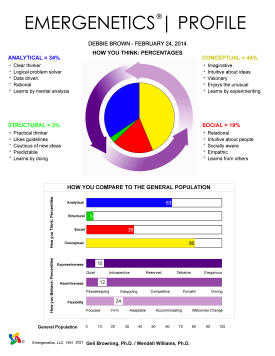
Welcome to part three of our inclusion series. In my previous post, I shared a few questions to help you get outside of your comfort zone and reflect on:
- Your perceptions of those who think and behave differently
- The impact of self-awareness on perspective-taking
- Opportunities to flex to communicate more effectively
I hope you had time to consider these questions and gain insights into your natural approach as well as variances from your colleagues. Perhaps over the past month, you also had some experiences that brought the importance of perspective-taking and flexing to life. I know I have!
While parts one and two of my series primarily focused on bringing awareness to our personal mental models and preferences, we are now shifting gears to identify how you can reconstruct your approach to be inclusive of those who have other views.
Why It’s Important to Reconstruct Mindsets in the Moment
As the adage says, hindsight is 20-20. We can often identify misunderstandings we carried into an interaction when we have an opportunity to reflect. However, it’s important to be able to identify our influences and biases in real time.
If we simply operate according to our own preferences, we run the risk of negatively impacting our work and our relationships. When we do not meet others in the middle, we may miss out on their brilliant ideas. We may also run into intent-impact gaps, where our messages are not received as intended, leading to misunderstandings and distrust.
Particularly in the context of inclusion, the ability to reconstruct mental models is essential. People need to know that their inputs are understood and honored in order to feel included. That can only happen when leaders model the way by embracing differences.
When we do not understand where our assumptions come into play, we may unintentionally perpetuate bias, and it can be easy to move forward without stopping to consider other perspectives given the many priorities competing for our time and attention.
If we want to be inclusive leaders, we must take a moment and ask questions to further understanding and avoid making assumptions. The question is: how do we do that?
Reframing Mindsets in Action
Shortly before writing this blog, I had an experience with my colleague that reminded me of the importance of reconstructing mental models. I created some new curriculum that my colleague Erin agreed to review. After a few days, she sent a meeting invitation to discuss the overall structure of the curriculum and how all the pieces connected.
Instantly, my Analytical preference, which can be a bit skeptical, started dissecting the possible bigger reason for the meeting. My primary concern was that Erin thought the format was all wrong and it would need to be entirely reconstructed.
I could feel my mind going into hyperdrive about what the changes would mean for our timetable and next steps, and then, I paused. Re-reading her message, I realized she had not made any comments about the quality of the structure. Erin only asked to discuss it.
Because of my understanding of my preferences, I saw how my Analytical mindset contributed to the story I made up based on only assumptions. Then, I thought about my colleagues’ preferences. For reference, you can see our Profiles below.


Knowing her preference for the Structural Attribute, I sent an email asking her to help me prepare for the meeting by answering a few questions, specifically:
- Whether there were issues with the structure of the lessons
- Where, if anywhere, she felt the information was disconnected
Erin provided me with details explaining that it wasn’t the structure of the curriculum. She needed more context about how it connected to other resources we provided. She also shared that she tried to honor my Abstract preferences by keeping her meeting descriptor high-level.
Instantly, my anxiety disappeared. Our meeting was productive. Her questions made sense when I understood the missing context, and I was thrilled that the curriculum was intact – it just required a few more details.
I had an opportunity to debrief with Erin, and we were both able to offer ideas about how we can communicate more effectively in the future. For example, I appreciate more why, and Erin appreciates more how.
Had I not stopped to seek clarity, I would have entered the meeting in a negative headspace. Knowing my preferences, I may have been direct and exacting in my approach, which would likely have been off-putting for her Social preference. Had that occurred, I would not have created an inclusive conversation that honored her interests and needs, and I may have damaged our working relationship. Luckily, by reconstructing my mental model in the moment, we avoided those outcomes.
A 6-Step Process to Reconstruct Assumptions in Real Time
Reflecting on this experience, there were six actions that helped me to reframe my approach. Whenever you find yourself feeling scratchy when receiving information or interacting with someone – or you notice that others seem uncomfortable – I invite you to implement the following steps:
1) Pause
When you or your colleagues feel scratchy, take a moment to stop rather than push forward. Lean into the pause to gather your thoughts and reframe the situation.
2) Ask yourself: What assumptions am I making?
There is a good chance that there may be a miscommunication or that important information is missing. Consider what you truly know about the situation and what stories you may be making up.
3) Ask yourself: Where are my preferences coming into play?
Once you identify any assumptions you may have made, consider your Emergenetics® preferences and preferred styles of working. Reflect on how those factors may be influencing your reaction.
4) Ask yourself: What are your counterparts’ preferences?
There is a good chance that whomever you are connecting with does not have the same perspectives as you. If you can access your colleagues’ Emergenetics Profile, it can provide insights to remove judgment from the situation and illuminate the ways that you work differently from one another.
5) Seek clarity from your counterpart(s).
While you may have some ideas about the cause of the disconnection, don’t make the mistake of assuming again. Instead, ask questions with the intent of seeking clarity. If you can flex into their Thinking and Behavioral styles, you can make the conversation even better!
6) Debrief when time allows.
While steps 1 – 5 can help you reframe your approach in the moment, I encourage you to incorporate step 6 after your exchange when possible. Reconnect with your counterpart(s) and ask what you could have done better so you can incorporate their feedback the next time you are working together.
There are many examples of scratchy moments and misunderstands in schools every day. When we have the self-understanding to pause and assess when we are making up stories, and then ask clarifying questions by leaning into the preferred Attributes of our colleagues, we can have a much more positive discussion that honors everyone for who they are.
Inclusive conversations come about by taking time to reflect and consider our biases. I invite you to put the tips above into practice to form a new habit. When you do, you will be better equipped to create a trusting environment that welcomes input and celebrates all perspectives.
Use Emergenetics to build more positive, productive relationships within your school community. Learn about our solutions for educators or fill out the form below to speak with an Emergenetics team member today.
 Print This Post
Print This Post
